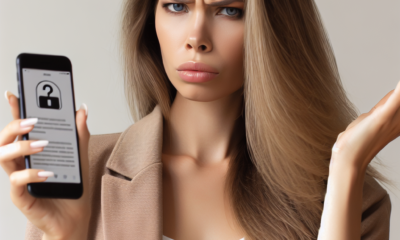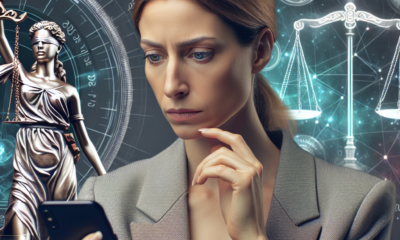Womens Self Defense
The Legal Conundrum Surrounding Safety Apps

In an age dominated by smartphones and digital solutions, safety apps have gained significant traction. From personal safety to emergency alerts, these applications offer a range of services designed to enhance user security. However, the proliferation of such apps raises complex legal questions that merit careful examination. This article delves into the inherent legal challenges surrounding safety apps, exploring their implications for privacy, liability, and regulation.
1. Privacy Concerns
Data Collection and Usage
One of the most pressing legal issues for safety apps is the collection and use of personal data. Many safety apps require access to sensitive information such as location data, contacts, and even camera feeds. Users often agree to data collection terms without fully understanding the implications, leading to potential breaches of privacy.
Legal Implications
In many jurisdictions, data protection laws, such as the General Data Protection Regulation (GDPR) in the European Union, impose strict requirements on how personal data can be collected, processed, and stored. Safety apps must ensure compliance with these regulations or face potential penalties.
User Consent
The need for informed consent is another legal hurdle. Users should be adequately informed about how their data will be used and have the right to withdraw consent. Failure to provide clear information can lead to lawsuits and a loss of user trust.
2. Liability Issues
Responsibility for False Alerts
Safety apps often send alerts to users about potential dangers, yet what happens when those alerts are false? If a user relies on an app’s alert and it leads them to take unnecessary or risky actions, liability issues can arise. Who is liable for damages or injuries resulting from reliance on inaccurate app information?
Legal Precedent
This area of the law is still evolving, and courts have yet to establish consistent precedents. Depending on the jurisdiction, app developers may face lawsuits based on negligence or failure to ensure accurate information dissemination.
Duty of Care
Safety apps may also face scrutiny over their "duty of care." If an app fails to provide accurate safety information or timely alerts, users may claim that the app’s developers breached their duty to protect users, leading to potential lawsuits.
3. Regulatory Challenges
Standards and Compliance
As safety apps become increasingly common, regulatory bodies are beginning to take notice. In some jurisdictions, authorities are establishing standards to ensure that safety apps operate responsibly and ethically. This includes covering aspects like data security, user privacy, and overall reliability.
Potential Regulations
Future regulations may also require safety apps to maintain transparency regarding their algorithms and data usage. This could involve disclosing how alerts are generated, which may be challenging for developers who rely on proprietary technology.
International Considerations
Safety apps often operate across international borders, complicating regulatory compliance. Different countries have varying legal standards, and navigating these can pose significant challenges for developers looking to market their products globally.
4. User Education and Awareness
Empowering Users
In the face of these legal challenges, user education becomes critical. Developers have a responsibility to inform users about the app’s functionalities, limitations, and the importance of verifying alerts independently.
Transparency in Terms of Service
Making terms of service straightforward and accessible can further empower users to make informed decisions. By enhancing transparency, developers can foster trust while reducing the risk of legal disputes.
Conclusion
The legal conundrum surrounding safety apps is multifaceted, encompassing privacy concerns, liability issues, and regulatory challenges. As we continue to rely on technology for enhancing our safety, it is crucial for developers to navigate these issues carefully. By prioritizing user education, ensuring compliance with data protection laws, and fostering transparency, safety app developers can create a more secure environment for all users, mitigating legal risks and enhancing public trust in their offerings. As the landscape evolves, ongoing discussion and legislative action will be key to addressing these challenges effectively.
Womens Self Defense
Uniting for Justice: Community Organizations Push for Stronger Self-Defense Legislation

Uniting for Justice: Community Organizations Push for Stronger Self-Defense Legislation
In recent years, the dialogue surrounding self-defense laws has grown more complex and critical, highlighting the need for a re-examination of legal frameworks that govern individual conduct during life-threatening encounters. As issues of personal safety, inequality, and the right to self-defense collide, community organizations across the nation are uniting to advocate for stronger self-defense legislation that not only protects individuals but also addresses systemic injustices.
The Current Landscape
Self-defense laws vary widely from state to state, resulting in a patchwork of regulations that can often leave marginalized communities under-protected. Some states have “Stand Your Ground” laws which give individuals the right to use force without the duty to retreat when threatened. Meanwhile, others adhere to more traditional “Duty to Retreat” principles, requiring individuals to avoid confrontation when possible. This inconsistency can lead to unintended consequences, particularly for people of color and those from lower socioeconomic backgrounds, who might be disproportionately criminalized in self-defense situations.
The Call for Reform
In response to these disparities, community organizations are rallying for legislative change. Groups focused on social justice, civil rights, and public safety are coming together to craft proposals aimed at reforming self-defense laws. These advocates argue that it is essential not only to ensure the right to defend oneself but also to create an equitable legal framework that reduces bias in how self-defense cases are prosecuted and adjudicated.
Key Proposals
-
Enhanced Training and Awareness: One significant proposal advocates for mandatory training in self-defense laws for both civilians and law enforcement. Understanding the legal implications of self-defense can empower individuals to make informed decisions during high-pressure situations.
-
Bias Review Measures: Community organizations are pushing for legislative measures that require law enforcement to undergo training on implicit bias and the historical context of self-defense laws. This could mitigate the risk of racial profiling and ensure that self-defense claims are evaluated fairly.
-
Legal Support and Resources: Providing legal resources and support for individuals who defend themselves can help level the playing field. Advocates suggest establishing funds or programs that can assist with legal fees for those who may not otherwise afford representation in self-defense cases.
- Community Dialogues: Engaging community members in discussions about self-defense can foster better understanding and cooperation. Organizing community forums to discuss individual rights, responsibilities, and personal safety can build trust and provide critical information.
Building Coalitions
Collaboration is at the heart of this movement. Organizations with differing focuses—such as gun rights advocates, domestic violence shelters, youth mentorship groups, and racial justice organizations—are finding common ground in the belief that self-defense is a fundamental right that must be accessible to everyone.
These coalitions are also crucial in countering misinformation about self-defense laws and their implications. By working together, they can foster a more informed public debate and promote legislation that is both just and effective.
The Path Forward
As these community organizations continue to push for stronger self-defense legislation, the conversation around justice, equity, and individual safety remains crucial. Advocates emphasize that any reform must be carefully crafted to protect the rights of all individuals while also addressing the underlying societal issues related to violence and safety.
In conclusion, the united effort of community organizations in advocating for stronger self-defense legislation reflects a growing commitment to justice that transcends traditional divides. By prioritizing equity and informed discourse, these groups are not only advocating for change in the law but are also championing the dignity and safety of every individual in society. The path to reform may be arduous, but the collective action of committed organizations can drive meaningful change in ensuring that self-defense rights are upheld for all.
Womens Self Defense
Self Defense Training For Women In A Bar Scene Or Walking The Mall — Lady Of America

http://www.ladyofamerica.com This is the last of the Lady of America Fitness for Women self defense training videos. This video is …
source
Womens Self Defense
One Punch Man #Selfdefense #Womens selfdefense #Defeat the enemy with one move #Selfdefens
-

 Womens Self Defense11 months ago
Womens Self Defense11 months agoNew Legislation Empowers Women to Defend Themselves
-

 Self Defense News1 year ago
Self Defense News1 year agoShe was convicted of killing her abusive boyfriend. Now a Maple Grove woman is home awaiting a new trial.
-

 Self Defense News1 year ago
Self Defense News1 year agoSelf-Defense for All: The new Gracie Jiu-Jitsu Pasadena is for everyone | Online Features
-

 Womens Self Defense1 year ago
Womens Self Defense1 year agoTop 5 Self-Defense Techniques Every Woman Should Know
-

 Womens Self Defense7 months ago
Womens Self Defense7 months agoUnderstanding State-by-State Variation in Self Defense Laws
-

 Womens Fitness1 year ago
Womens Fitness1 year agoXtreme Bodyweight HIIT (Lots of Jumping!) | Joanna Soh (Fio Series)
-

 Womens Preparedness1 year ago
Womens Preparedness1 year ago10 essential skills for surviving in the great outdoors
-

 Womens Preparedness1 year ago
Womens Preparedness1 year agoEmpower Yourself: A Guide to Female Survival Planning






